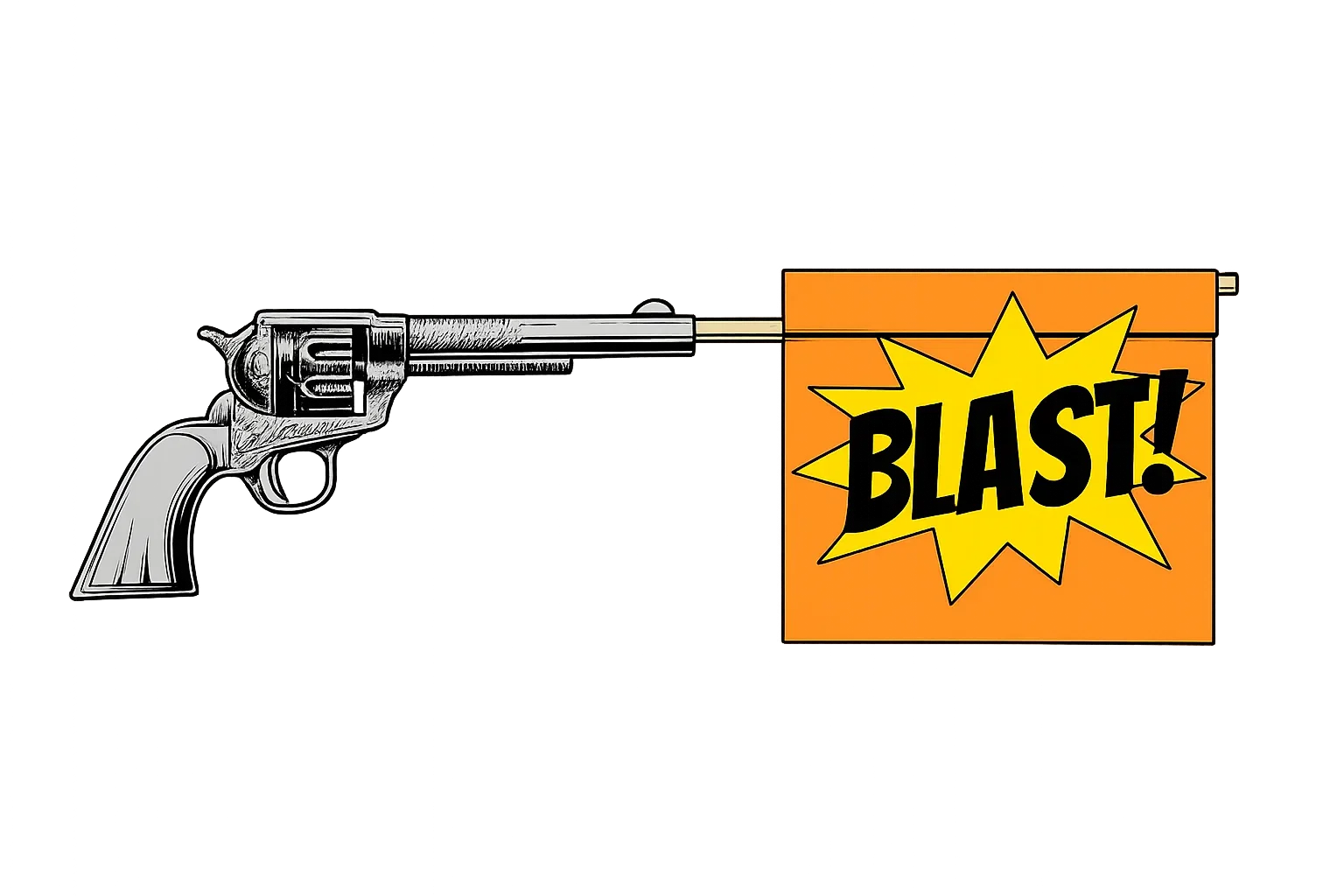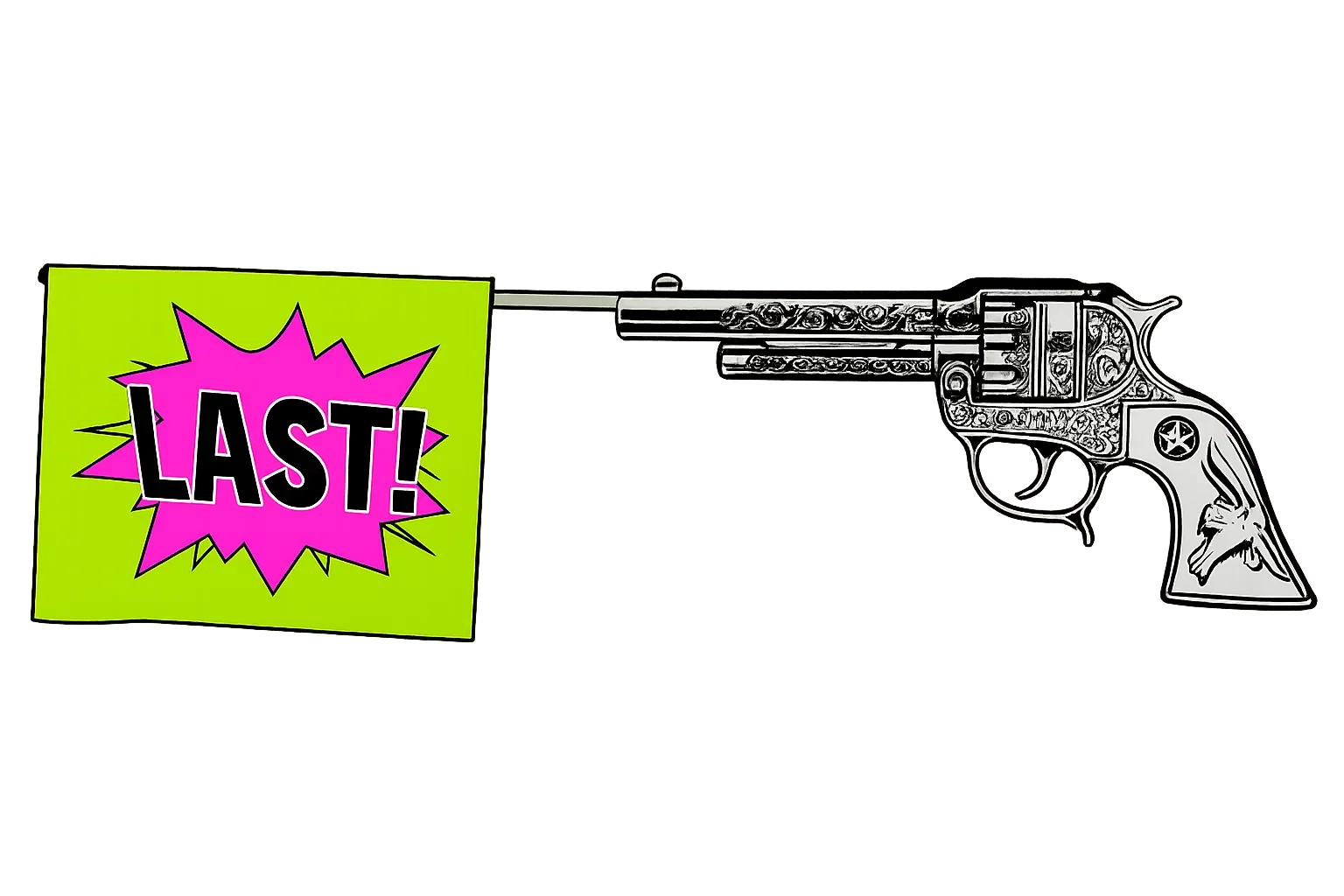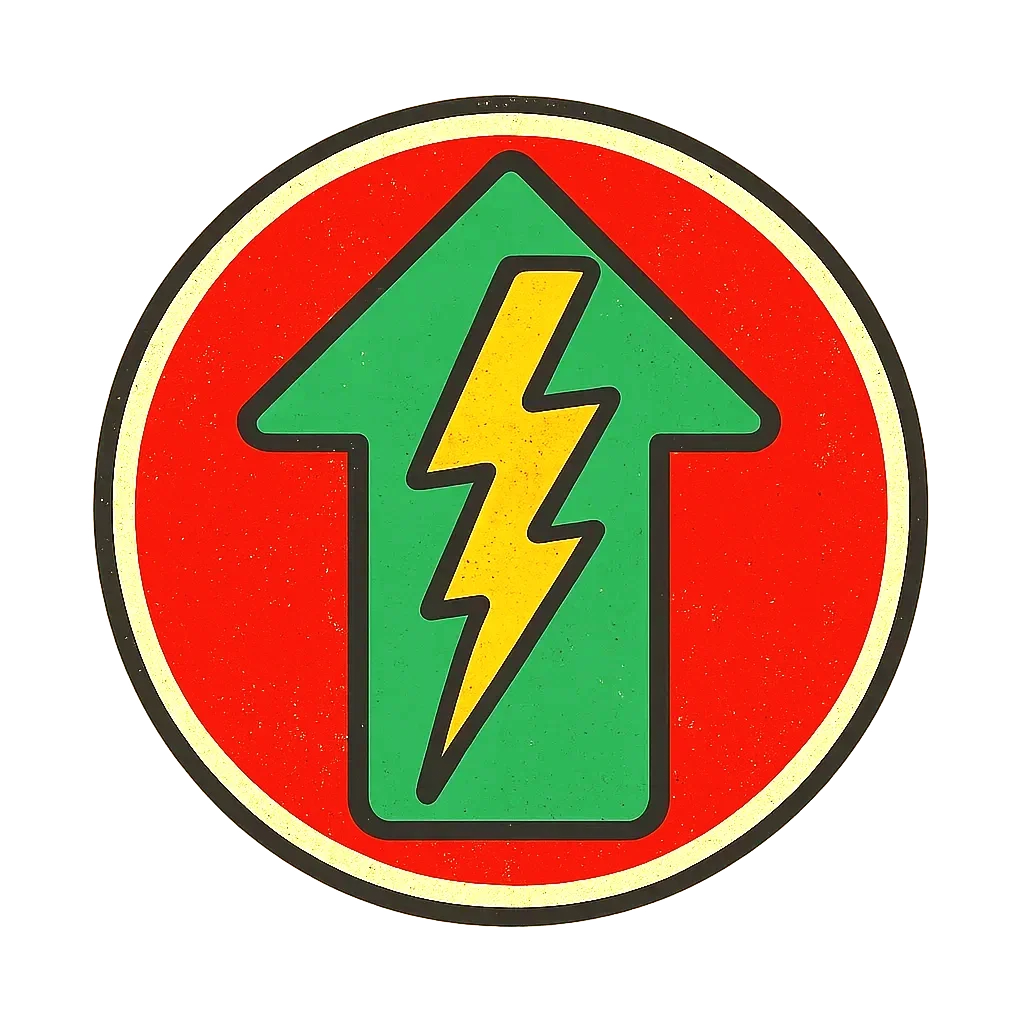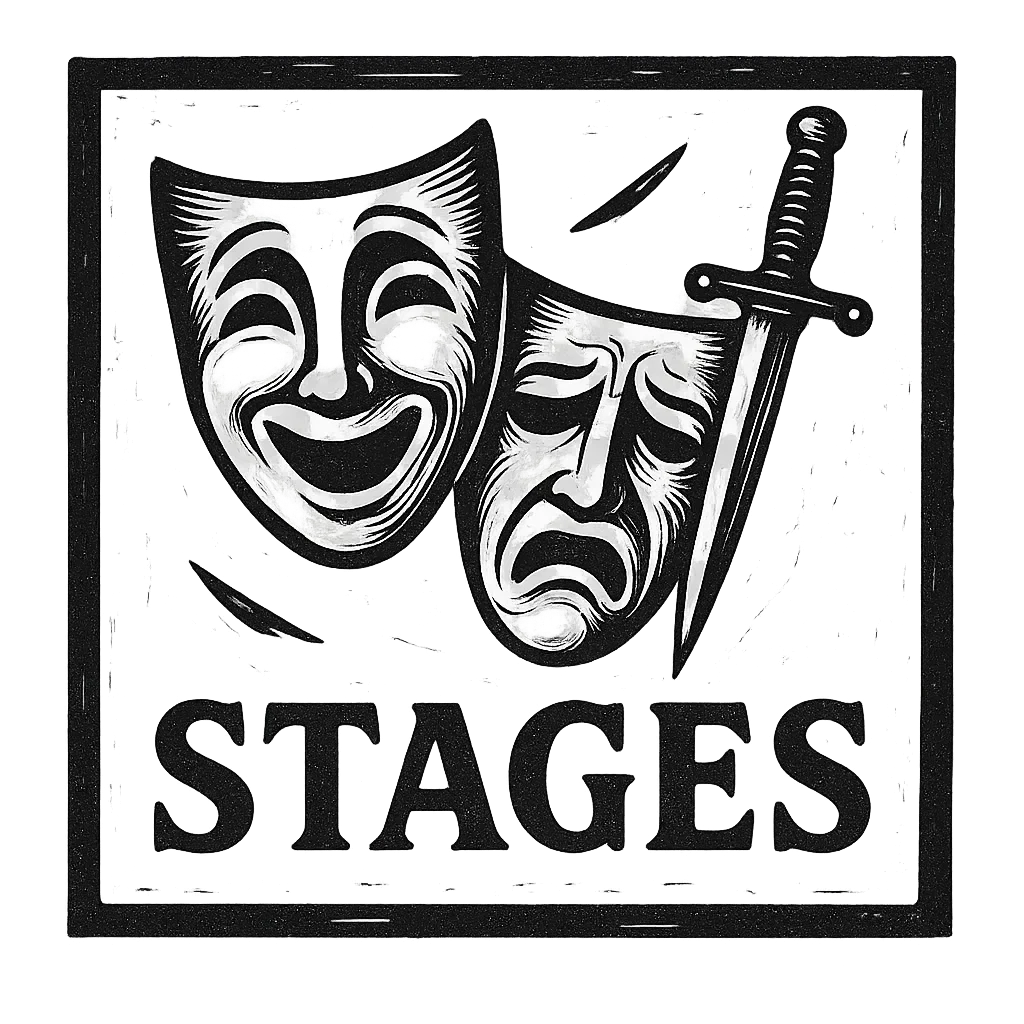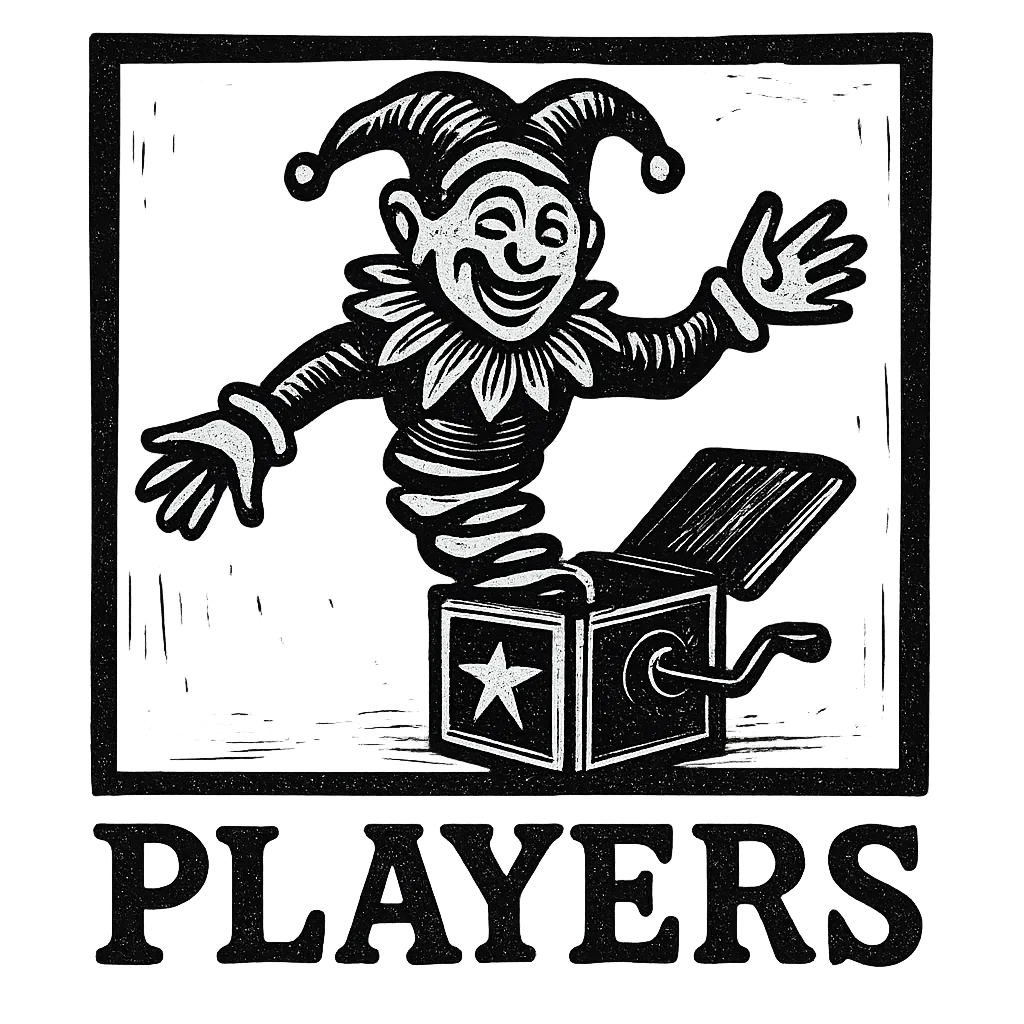LEY LADY LEY
From 1962 to 1967 The Get Quick (Mitch Joy, Erik Evol, Coco LeBree) were living and recording in London, embarking on mini tours in their spare time through the country and continent. These jaunts were arranged by their producer, Fabian Kevorkian, and manager, S. True Smith (who almost always accompanied the band, his burly presence enough to ensure the promoters paid up after the gig). Together they conspired to warp the tour route to fall upon Ley Lines — the mystical currents running beneath the earth, as charted by the likes of Alfred Watkins and other assorted dowsers in rumpled corduroy. The Get Quick lads, arguably oblivious to the deliberate plotting of Fabian Kevorkian and the calculating eye of S. True Smith, nonetheless eagerly embarked upon a string of gigs along these ancient, invisible highways — chasing psychic vortices, Stone Age crossroads, and parochial halls humming with buried secrets. What follows is a the most accurate and complete account to date of their clandestine crawls across Albion, based mainly on insider info and privileged information — with further details culled from local press reports, firsthand witness records and pirate testimony...
Clun, Shropshire — June 1963
The Wyrm’s Belly Folk Moot, behind the Crown and Sickle Pub
They arrived in Clun just as the mist was crawling down the hills like a bashful ghost in search of its shroud. Erik Evol swore he saw a Roman centurion weeping into a fern by the roadside. S. True Smith, meanwhile, was busy negotiating with the landlord of the Crown and Sickle, who only accepted payment in pre-decimal ha’pennies and live stoats.
The Get Quick performed under a sagging tarpaulin near an ancient yew stump reputed to hum in the presence of Martian metals. The crowd was thin, spectral — local farmhands, moon-eyed girls in poppy crowns, and a woman named Griselda who claimed to have invented cheese. Mitchell Joy drummed in a trance, invoking storm patterns with every thud; Coco LeBree, his blond pageboy hair like a halo, in violet crushed velvet and bare feet, sang backwards for most of the second set. Rumors quickly began circulating that in doing so he caused three cows to calve prematurely and a vicar to speak in tongues.
It was only later they discovered the village stood precisely at the crossing of two major telluric currents — the so-called “Mammoth Vein” and “Magdalene Arc.” Erik Evol disappeared into a mushroom ring afterward and reappeared naked and unconscious in a ditch six hours later, clutching a broken compass and a mechanical owl named Darius who spoke Greek.
The Curzon Séance, Soho — July 1963
No show that night — just a film. Coco insisted they see Orphée at the Curzon, though the projectionist looked uncomfortable when they handed over their tickets. “She said you’d come,” he whispered, and gestured them toward a private screening room that hadn’t existed earlier that day.
The film began normally, but shifted partway through — Cocteau’s images dissolving into what seemed like live footage: The Get Quick themselves, filmed from above as they sat in the theater. Erik began to argue with his on-screen self. Coco watched in silence, tears rolling down his cheeks. Mitchell laughed once, then bit his knuckle to stop.
At the climax, a character in the film seemed to break the fourth wall when — without looking directly into the camera — she nonetheless leaned her head toward it and, in flawless English, said: “Play the song as you were. About the red staircase.”
When they stumbled into the alley after, Soho was silent and painted in blue hues. The poster outside now advertised The Get Quick in a new film: La Croisière de Plaisance Vulgaire — two years before the album was conceived.
Dinant, Belgium — March 1964
“Nuit du Chien Solaire” Festival, Citadel Courtyard
Fabian Kevorkian had insisted this stop would “vibrate the astral tuning fork.” The Get Quick were booked as headliners for the Nuit du Chien Solaire, an obscure occult music gathering hosted by the Apollonian Parapolitical Institute of Wallonia. Their dressing room was a limestone cell carved by Saxon monks.
As they tuned up beneath a full moon, strange figures began to emerge from the darkened niches of the Citadel — women with painted faces, bureaucrats in druidic robes, and a man who claimed to be the last surviving Knight of Atlantis.
Erik’s guitar tone — filtered through a rusted Czech fuzz pedal and a pocket radio tuned to Vatican frequencies — summoned a phenomenon local papers described as "une inversion temporaire du temps." One attendee claimed to have de-aged ten years during the set.
Coco LeBree, ever the anchor, played a 5-minute solo on a borrowed gut-bucket bass that caused multiple audience members to receive clear visions of their past lives as salt miners, Mesopotamian scribes, or amphibious sex diplomats from Sirius B.
The Spiral of Chartres, France — March 1964
A supposedly routine acoustic gig inside the crypt of Chartres Cathedral became a ritual they weren’t meant to lead. The audience was mostly robed — “the local surrealist gentry,” according to Smith — and the atmosphere thick with sandalwood and industrial lacquer.
As Coco plucked the opening riff to “Gentian Loop,” a pressure began to build. By the second verse, the floor was spinning. By the bridge, Mitchell’s heartbeat had synchronized with a pulse in the stone beneath their feet.
It was later suggested that the band had activated the Spiral — an invisible vortex mapped by Fulcanelli, once thought sealed beneath the cathedral in the 17th century. Audience members began to weep or levitate; Kevorkian’s left arm disappeared for seven minutes.
After the gig, a cloaked woman handed Coco a bronze coin with her own face on it, and the word "VERSA" stamped beneath.
It was an omen of what lay before them. No pun intended.
Once The Get Quick crossed the Channel, the ley lines grew wild — no longer the sturdy old tracks of Albion, but serpentine, stammering things tangled in cathedral spires, catacombs, and Cold War radio arrays. Fabian Kevorkian believed these continental crossings could “scramble or amplify”—but never stabilize—the psychic output of the band. He wasn’t wrong.
This was a chaotic jaunt through mainland Europe, where ley energy misfired like faulty fireworks, and The Get Quick became accidental gods, sacrificial lambs, or flickering broadcasts on invisible frequencies.
Zürich, Switzerland — March 1964
Closed Session for the Ordo Maximus Hermetica in the Cabaret Voltaire
Summoned by encrypted telegram, The Get Quick arrived in Zürich to perform a “nonlinear set” for the Ordo Maximus Hermetica — a secretive order of psychic architects and retrocausalist thinkers headquartered in the renovated ruins of the original Dada cabaret. Fabian Kevorkian insisted it was “good press for the otherworld.”
Their instruments were attenuated to a tuning system allegedly devised by Pythagoras’ reanimated skull. The audience, consisting of 23 silent masked figures and one enthusiastic Alsatian, sat in total darkness as the band performed a set constructed entirely from dreams they’d had the previous week, replayed in audio form via an etheric loop-box powered by meteorite fragments.
During “Baron Saturday Buys a Ford Cortina,” the walls turned briefly translucent, revealing gears turning in the fabric of space-time.
The band was paid in stock options from a company that wouldn’t exist for another decade, and a crystal egg filled with something that cooed like a crocodile. Coco later dropped it in Lake Zürich on purpose.
Totnes, Devon — March 1964
Spring Equinox Rites at Brutus Stone Hall
Totnes, as every initiated person knows, is built on a spiraling geomantic helix — five turns deep and singing. The Get Quick, booked to play the Spring Equinox ball in Brutus Stone Hall (named for the mythical Trojan founder of Britain), arrived just as the snow turned to pollen.
A crowd of barefoot antiquarians and pub druids cheered them on. S. True Smith bartered their fee in exchange for three psychic maps and a jug of cider said to induce remote viewing. The band opened with “Buttercup Repeater,” during which a previously inert stone in the hall’s foundation began to emit a low, resounding D# — “a sonic Grail note,” according to Kevorkian, who later tried to bottle it.
Midway through the set, Erik began playing notes only visible to the eye, traced in air like glowing sigils. Mitchell’s drumming synced with the local earth tremors, and Coco’s mohair boots levitated exactly three inches above the floor during the bridge of “Mind the Gap, Eternity’s Coming.”
The next morning, the entire hall was gone, replaced by a circle of wild daffodils and a postcard addressed to “Those Who Play With Fire and Vinyl.”
Avebury, Wiltshire — May 1964
The Mooncalf Jamboree, Dandelion Barn
Avebury was the epicentre — or so Kevorkian swore with grave eyes and a trembling martini. The band pulled up in a borrowed Bedford van loaded with gear, velvet, and a jug of mead Coco had bartered for in Glastonbury. S. True Smith had booked the show through a woman claiming to be a reincarnated Neolithic harpist. She was later seen dissolving into mist behind the Red Lion.
The Get Quick played inside a timber-framed barn laid precisely along the Michael Line, that great serpentine artery of telluric charge. The barn’s beams vibrated visibly when Erik Evol hit a particular Bb chord during “The Ministry of Yes.” Children in the audience began laughing uncontrollably. Two archaeologists fainted.
Coco’s bass echoed in reverse, notes appearing before the plectrum struck. Mitchell’s drum set melted three inches into the floor. Time did strange things that night — a local boy’s eyebrows were absorbed by his forehead while he recited lines from The White Goddess, and a ruddy-faced farmer confessed he’d spoken to a talking hare named Clement who claimed to be guarding a door to Albion’s dreaming.
Bodmin Moor, Cornwall — June 1964
Secret Solstice Set, at the Cheesewring Stones
By this point The Get Quick were deep into their “hidden geography” period. Kevorkian had a map drawn on lambskin, allegedly copied from a vision had during the Blitz. It showed ley junctions as blooming, oculoid fungi. The Cheesewring, standing proud atop the moor, was one such node — where the Pendragon Line intersected the elusive Black Mirror Axis.
The 21st of June. The show was unadvertised. They played for an audience of twelve: a folklorist, a lost rugby team, two Belgian alchemists, and a young girl who claimed she was born inside a standing stone. The band wore robes for the first set, then nothing at all for the second.
Erik’s solos began to resemble birdsong. Coco’s low frequencies made granite hum. Mitchell performed a polyrhythmic drum incantation that seemed to summon a low-pressure system — wind screamed across the moor, and static crackled in their hair.
Afterward, they found a perfect circle of scorched moss, and Fabian discovered his watch had stopped at 3:33 — permanently. He threw it into a bog and said nothing the rest of the week. Apparently it had been gifted to him by a very important duke.
Knaresborough, North Yorkshire — October 1964
Performance in the Forest, at Mother Shipton’s Cave
Near the petrifying well, under a full Hunter’s Moon, The Get Quick dialed in their amps beside curling roots and damp limestone. The cave itself — a known power node intersecting the Branwyn Conduit and the St. John Vector — crackled with ley resonance. Fabian said the air “tasted of static-charged peanut brittle and iron age teeth.”
Local mystics brought folding chairs to wrestle with. A witch in Biba boots handed out violet sugar cubes. S. True Smith fended off a council inspector with a forged Roman land deed.
The band launched into a slow, swampy version of “Call Me Arthur As I Die,” and the rocks began to drip a black, glittering sap. Erik’s guitar emitted harmonics far removed from any normal scale, and Mitchell’s floor tom cracked open to reveal an ammonite fossil.
Several audience members became entranced and claimed to see a procession of hooded figures walking backward through time across the hillside.
Llangollen, Wales — March 1965
The Cloaked Pavilion Sessions, near Valle Crucis Abbey
Booked on a whim, or perhaps a hunch transmitted through tea leaves and BBC static, this show took place under a massive canvas tent erected on the ley-plaited pastures near the ancient Cistercian ruins. According to Kevorkian, the spot was where the Mary Line passed through a gap in the Dinas Coil Spiral, a point of great “feminine flux.”
It rained diagonally for most of the set. Erik played hunched over a harp-shaped guitar, his voice a trembling reed in the wet Welsh wind. Coco’s bass tones seemed to awaken something in the soil — the cows in a distant field stampeded counterclockwise, then fell into a trance. Mitchell wore a stovepipe hat and spoke only in Middle English to the annoyance of everyone.
The locals, wrapped in oilskin and the folklore of comfort, said it was the best concert they’d ever half-seen through mist. One woman claimed her dead husband stood beside her, clapping. Another lost time and reappeared two days later in Shrewsbury with a pressed flower from 1372.
The Paddington Disjunction, London — March 1965
Onward weird gigs, thin places, and astral fanfare, all managed by the unflappable S. True Smith and engineered by Fabian Kevorkian's increasingly arcane maps. Stranger still: the empty nights between the gigs, when The Get Quick weren’t on stage but drifting in liminal eddies of the urban unconscious. These times often yielded some of their most potent (and least understood) experiences. Off-nights in cities where ley lines don’t hum so much as hiss — where power pools beneath concrete and stone, below tangled in Victorian plumbing and the memory of Roman roads.
They were supposed to have the night off — a modest dinner, some hotel gin, maybe a newsreel. But Mitchell wandered off near midnight, trailing a stray cat with one glass eye. Erik followed, guitar slung over his shoulder like a rifle in a peace march.
By 2AM, the band found themselves in the disused vaults beneath Paddington Station — a pocket of ley energy known (to certain mailmen and a retired theosophist in Penge) as The Disjunction Point, where parallel tracks of psychic history collide. The tunnels were lit by ancient filament bulbs still faintly glowing, despite being disconnected from the grid since 1949.
They encountered a group of Italian railway mystics down there, muttering over cups of bitter coffee and arcane railway maps. Coco swears they jammed with a ghostly skiffle band that had vanished in 1957 en route to a battle of the bands in Hull.
When they emerged at dawn, Erik had sheet music no one remembered writing, and Mitchell kept saying “we missed the right Wednesday.” S. True Smith took them for kippers and refused to discuss it.
Bury St Edmunds, Suffolk — June 1965
The St. Germain Hall Incident
This gig was initially canceled by the town council due to “unusual vibrations” reported at the venue during load-in. Fabian, furious and reeking of fennel gin, arranged a replacement show at an abandoned Masonic lodge, built atop a pentagonal ley node known as The Rood Eye.
The Get Quick played only one song — a 33-minute improvisation called “Man is the Hollow Thread” — during which the lights flickered and an elderly man in the front row began to levitate, weeping in Latin. Coco’s bass seemed to displace reality in small cubes. Erik played with the guitar behind his back, then with no hands at all.
Mid-performance, Mitchell collapsed in a trance and was heard reciting names of stars only visible from the southern hemisphere. He later claimed he’d been watching the band from above, “with eyes made of sand.”
The tape machine exploded. The gig was never officially acknowledged. The town square now has an unusual acoustic “dead zone” where birds refuse to sing.
Chartres, France — July 1965
Unannounced Midnight Concert in the Crypt of the Cathedral
This was not officially a gig. It was an “acoustic alignment experiment” arranged by a Rosicrucian contact of S. True Smith who claimed to have identified the European Dreamtrack — a ley line that linked Mont Saint-Michel to the Egyptian pyramids via certain high-vibratory cathedrals.
The Get Quick set up beneath Chartres at midnight, guided by torchlight and Gregorian fart choirs. They used no amplifiers. Erik played through a crystal hung with copper wire. Coco sang through a brass funnel that once belonged to Apollinaire. Mitchell used only bones and wood — no skins.
Each note seemed to echo for minutes. Pilgrims upstairs swore they heard angels or airplanes. One bishop fled. A visiting American tourist named Dwight Smalls claimed to see a golden shape emerge from a pillar, give him a thumbs-up, and dissolve into steam.
Afterward, the band dined in silence, then slept for two days in a converted windmill. They never spoke of the performance again — except to say that something opened for them. Or perhaps the other way around.
Naples: The Vending Machine Oracle — August 1965
Trying to escape the heat, the band ducked into an arcade in the Spanish Quarter. Coco inserted a coin into a dusty vending machine labeled LA BOCCA DI SYBILLA and received a strip of paper that read:
“Tonight: Play no sharps. The tower will chime once. He will be waiting in the second chord.”
The gig that night (in a half-demolished opera house) went sideways from the start. Every sharp note triggered minor equipment failure — strings snapping, lights bursting, Coco’s bass detuning itself mid-song.
During “Blow the Candle Backwards,” the tower bell chimed — though no clock stood nearby. A man in silver spectacles approached the stage and whispered something to Erik, who stopped playing, opened his guitar, and pulled from it a sheaf of handwritten music no one had ever put there.
They left Naples the next morning. Coco found a second message in his jacket pocket:
“You left the third chord unfinished. He noticed.”
The Moseley Time Fluctuation, Birmingham — May 1966
Snow on the ground, gig canceled due to a fire at the venue (though the band hadn’t even been booked there yet, according to the papers). They took refuge in a half-abandoned arts club in Moseley, full of poets, hoaxers, and women in knee-high boots who claimed to be from the 1880s.
Fabian, who had become obsessed with ley nodes converging around the Cadbury factory, made them walk the streets at 3AM holding divining rods and humming alternate chorales. Mitchell found a strange watch in the gutter — the hands ticked counterclockwise and pointed toward a disused church tower that wasn’t on any maps.
Inside, they found a single record player spinning The Get Quick’s first EP, except the instrumentation was wrong — baroque strings and Turkish percussion. The record label read: Reverse Light Orchestra — Recorded 1973. Coco recognized the bassline as his, but different — wiser. Joy wrote in his notebook: “This is the version we will record, unless we forget.”
The next morning, none of them could find the church again. The watch had stopped at 4:27 and melted into a small pool of plasma in Mitchell’s waistcoat pocket.
Melrose, Scottish Borders — August 1966
Abbey Ruins Raga at Twilight
They played within the open ribs of Melrose Abbey, at the confluence of the Arthurian Meridian and the Chalice Beam, both charted dubiously by Fabian using pendulums and crusts of buttered toast.
A ghost-hunting society had set up camp nearby and provided backup vocals during the encore (largely uninvited). Coco wore a robe of velvet patchwork and summoned sub-bass notes that echoed through tombstones. Erik tried out a new tuning he’d charted in a dream. Mitchell insisted on using found objects: milk churn, deer antler, a Scottish newspaper from a not-so-future date.
When the set ended, all present noticed the moon had turned a pale green. S. True Smith shouted at a constable until he agreed it must have been “a trick of the fog.”
A youth named Lennox vanished during the final number and reappeared ten years later as a successful banker in Rio de Janeiro, claiming no memory of the show — only “a sensation like standing inside a poem.”
St. Michael’s Mount, Cornwall — August 1966
Broadcast from the Threshold
No audience this time — only microphones, crystal dishes, and a live shortwave transmission beamed directly from the foot of the mount as a gale howled overhead. S. True had secured access through a dubious connection in the Ministry of Fisheries and insisted this promontory aligned precisely with five other sacred sites when viewed from the perspective of Sirius B.
The performance was pure ritual: Coco reading alchemical recipes over a bowed bass drone; Erik improvising counter-melodies in what he called “English Egyptian”; Mitchell drumming a heartbeat in 7/4 that seemed to summon strange reverberations from the deep channel below.
The broadcast was received by three pirate radio ships in the North Sea and, inexplicably, by a ham operator in Reykjavik who claimed the signal burned an image into his wall — a sigil, half flamingo, half crown.
The band left the mount at dawn, silent and shaken. “We played for the stones,” said Erik. “They nodded.”
The Black Switchyard of Brno, Czechoslovakia — September 1966
The Get Quick were supposed to play an open-air theatre. Instead, they were “invited” (coerced?) to a Cold War-era railway yard just outside Brno, surrounded by rusting towers and rows of dead trains.
No tickets. No crowd. Just a dozen silent men in leather coats, and a Polish girl with a Vox amp strapped to a donkey.
They performed under sodium lights, the feedback echoing off steel cars painted with runes and circuit diagrams. During “Rat King Pulse,” the sky blinked out for eight seconds. When it returned, Erik’s guitar had turned translucent, and the bassline was accompanied by a second, inaudible rhythm — picked up only by dogs and military-grade EMF meters.
Afterwards, an engineer claimed they’d activated the “black switchyard” — a forgotten Soviet experiment in psychoacoustic teleportation. S. True Smith hasn’t been able to sleep near trains since.
• • • The Highland Incidents • • •
The Highlands: raked by mist, stitched with standing stones, and echoing with the footfalls of forgotten beings. Here, The Get Quick’s jaunt became less a tour than a soul-test — part gig, part geas — where ley lines turned serpentine, and monsters waited not in the shadows but on the guest list.
Coco LeBree, now transmuted to female form, with her glamour sharp as mirrored glass, moved among these presences as if born to them. None outshone her — not the fairies with their wine-slicked mouths, nor the antler-crowned wights of the cairns. “The Highland Incidents,” — November 1966 — stitched from fan recollections, lost police logs, and the diary of S. True Smith, who began misspelling his own name not long after.
Oban: The Singing of the Seal Wives
Booked to play an old sailing hall on the waterfront, but the gig was quietly relocated to a stone amphitheatre carved into the headland cliffs. The audience: a mix of damp-haired locals, off-duty fishermen, and several cloaked figures who smelled unmistakably of salt and iron.
Coco opened the set barefoot, wearing a velvet coat made from the lining of an 18th-century strongbox. Her voice during “Sea Turned Mirror” was said to still the waves. Midway through, a pod of selkies — or something like them — emerged from the surf, draped in robes of bladderwrack and bells. They began to sing back.
Erik’s guitar changed key without his hands moving. Mitchell’s drums became deeper, each thump like a dropped anchor.
After the show, one of the cloaked ones approached Coco and said: “You have our sister’s voice. How came you by it?”
Coco smiled and offered a cigarette. “I am her.”
Later that night, a lighthouse beam miraculously turned a milky turquoise and stayed that way for several years.
Dornoch: The Last Gig Before the Antlers
Kevorkian insisted they play Dornoch to “re-stabilise the energy lattice,” though local promoters claimed they’d already played there twice (they hadn’t). The venue was a deconsecrated church with an upside-down nave and windows depicting scenes no one could justify — a horned queen, a boy burning in water, a circle of horses with human eyes.
The Get Quick’s soundcheck summoned something. Or perhaps woke something. During the show, Mitchell’s floor tom grew moss. Erik bled from the fingertips and never noticed. Coco glowed faintly blue and addressed the crowd in a language that even Gaelic speakers said sounded “older, and colder.”
Midway through “Cemetery Waltz,” a figure emerged from the woods behind the apse — towering, antlered, clad in rusted chains. Audience members described a deep sense of forgiveness, followed by a blackout.
They awoke in rows on the church lawn, unbruised but changed. The tapes were blank. The promoter was never seen again.
Joy later said: “He wanted to dance, that’s all. I sang the steps as I knew them.”
Loch Maree: The False Festival
There was no festival scheduled in Loch Maree. No flyers. No one in the village had heard of it. And yet, hundreds gathered. Some came from as far as Bergen, claiming to have dreamt the date and location.
A makeshift stage had been constructed out of black driftwood, facing the loch. The air buzzed with midges and Old Norse.
The Get Quick played a full set, though they couldn’t recall loading in their gear. Coco’s bass throbbed like a dragon breathing. The crowd danced in tight circles, arms entwined, eyes rolled back.
As the final chords of “Widdershin Tango” rang out, the water rose in sudden silence — and out of the loch came a woman on a barge of bones, crowned with tarnished silver. She raised one hand. Coco returned the gesture. Blood burst from Joy’s nose. Erik screamed a command in anger at the sky.
When the band woke up, it was morning, and the stage was gone. The villagers insisted nothing had happened. S. True Smith found a runic note inscribed in the sole of his shoe that translated roughly to:
The tune you borrow is the tune you owe.
